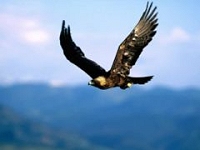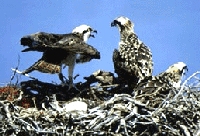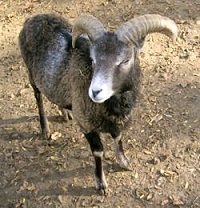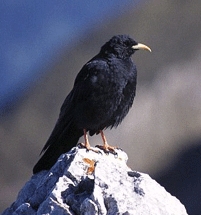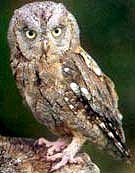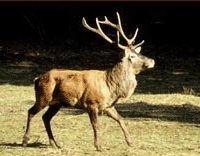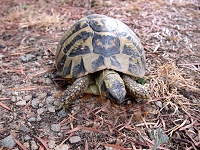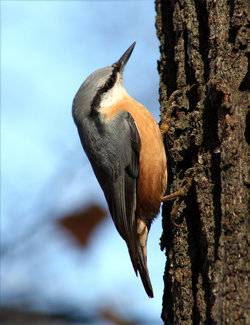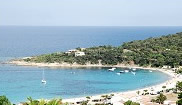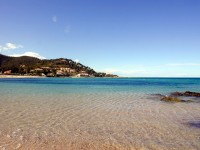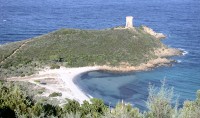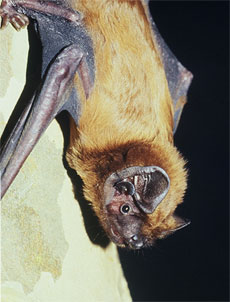
|
| Contact |
|
|
|
|
|
|
|
|
|
|
|
|
|
|
|
|
Practical Infos |
|
|
|
|
|
|
|
|
|
| Restaurants |
|
|
|
|
|
|
|
|
Overview of wildlife Corsican
"Quand la terre sera usée, l'humanité déménagera dans les étoiles." Gustave Flaubert
(When the earth shall be worn, humanity will move to the stars.)
"Le parfum de l'aubépine n'est pas inutile aux étoiles." Victor Hugo
(The fragrance of hawthorn is useful to the stars.)
"Va prendre tes leçons dans la nature." Leonard de Vinci
(Go take your lessons in nature.)
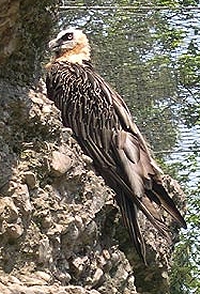
|
| The Lammergeier |
We meet from 1000 m altitude in the valley of Asco, Tavignano and Restonica. It's a great glider that feeds on carrion and bone swallows it whole. If they are too big to be swallowed, Gypaète can be projected from the top of the cliffs and feed themselves and their fragments. It is difficult to observe its habitat indentations in the rock. The female ponds 2 eggs at the end of January until the end of March smoulders around but n'élevera a single small. It is a fragile animal that supports evil exploitation of the mountain by man.
Its future is in jeopardy.
Long: 110 to 115 cm, scale: 265 maximum
15 pairs identified in Corsica whose 2 to Bavella
|
|
|
| The golden eagle |
In flight the golden eagle is distinguished by its wings wide and long enough and headed prominent. If he dwells on the heights, it also does not hesitate to come hunting in the mountain pastures. Contrary to the legend falls prey hardly 1 kg. It is a great predator hares and young bighorn sheep. His diving exercises that were approaching 200 km / h are impressive.
Habitat: cliffs high altitude Long: 95 cm; scale: 227 cm maximum.
24 couples are registered in Corsica
|
|
|
| The osprey or eagle fisherman |
It is a curious raptor feeding fish. The plane between 20 and 35 m above the water and can disappear entirely under water during his dive. He immediately resumed his flight by shaking its wings, which are not impervious. The prey of 2 kg does not make him afraid. It nests in the pine trees or branches that have died. The nest, which serves several years in a row, consists of heather and herbs. The female lays three eggs and incubating 35 days. The male, however, reported three to five fish every day at his small family. It is a species which has almost disappeared Corsican; there are more than 25 pairs aroun
|
|

|
The royal milan
Nicheur up to 1400 m, is the most easily identifiable raptors Corsican sky, thanks to its brown color at its forked tail and its thin wings and elbows.
It now stands at 1.50 md'envergure. The plane very often in search of food, consisting of small prey and carrion. Affectionnant the open expanses, it is more rare in middle wooded.
|
|
| The argali |
The argali Corsican is a subspecies endemic to the island. You must be patient to see the encampment taking refuge in the mountains, especially in the reserves and Bavella Cinto. Currently, the herd is estimated at about 500 warheads. But Cousin sheep version wild argali is emblematic Corsican summits. The male is distinct from the female by its horns spiral and his black chest. Farouche, can be seen mainly in the mass of Cinto, and Bavella Bonifatu. Herbivorous, feeding of aulnaie, wood and various grasses.
The animal is called u muvrinu in Corsican, which has inspired a famous polyphonic whole, I muvrini.
|
|
|
| The chocard |
Related to the raven, chocard Chough is found easily on the heights of the mountains of Corsica. Present especially at the top of Bavella Cinto and he moves noisily band and plays with the air currents in the vicinity of hikers who make the break, looking for some leftover food. He moved to the Valley happy to eat, but soon rejoined his preferred habitat: large rock.
In summer, it feeds primarily on insects and wild berries. Its magnitude reached 70 cm and its size reminiscent of crows although it is clearly distinguishable from him with a yellow beak and red-legged.
C'est la plaie des grands planeurs (gypaete, aigle, vautour,...)
|
|
|
| The little owl Duke - Ciocciu |
This nocturnal raptor no larger than a robin is evil in the trees. Its plumage blends perfectly with its environment. On the day, it remains nestled in a hollow tree. The air grumpy, eye color orange, it has two egrets on the head.
They eat a variety of prey that swallows whole to reject a bit later in the form of balls of fur or feathers digests what he does not. The animals are silent in flight, but it is not uncommon at night to hear their cry, which is intertwined with that of toad obstetrician
|
|
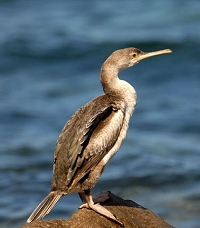
|
| The cormorant |
This sea bird is fairly easily by his colleague the great cormorant by the structure and form of his neck: the head position is higher. It is relatively quiet except for the period loves. The laying of the female is three eggs in late winter. The Crested Cormorant loves the rocky coast. It is a fairly heavy and low, and he landed awkwardly on the water, but there is an outstanding diver. They eat fish that is often caught at great depths ...
It was in Corsica that has set one of the most important Mediterranean populations of this species, with about 1000 breeding pairs.
|
|
|
| The Corsican deer |
While the last "big tree" of Corsica was killed by a poacher in the late 1960's, J. Leoni staged its reintroduction in Corsica since Sardinia in 1985 in partnership with the Sardinian region. Conservés in three enclosures, the first individuals were released complete in 1998 in the region of Quenza (Corse). Starting eight animals introduced in 1985, the population had increased to 103 individuals in 1998. The animals came from Sardinia, have adapted very well in three enclosures of several dozen hectares each. The enclosure of Quenza accommodates 36 people. In early 1998, a group of 16 individuals has been released successfully in the region of Quenza.
|
|
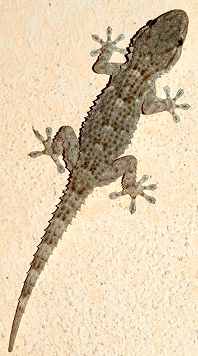
|
| The gecko |
His name is Taranto, Gecko walls.
It is found in almost all of the Iberian Peninsula including inland, Italy, the Balearic Islands, Corsica, Sardinia, Crete, the Ionian Islands, Greece and North Africa.
Nocturne, but exposure to sunlight especially in the morning. He lives mainly in the rocks, walls, stone walls, trees, huts, houses, swivel, often takes refuge under the planks laid on the ground during the day Commensal (who lives at the expense of another, but it does not cause damage) to humans, but also tree. Very often frequent the homes where he found food in abundance. Innofensif. They eat a variety of flying insects and small scramblers.
S'observe easily in the evening light sources around homes.
|
|
|
| The Euprocte Corsican |
This little amphibian body has a smooth, light yellow to brown, olive or not spotted greenish brown. A line vertebral reddish brown highlights back, the tail is powerful, and section oval. The Euprocte has no lungs, the gas exchange (breathing) is at its thin skin and fragile, and in his mouth.
The Euprocte is present shoreline until 2200 m altitude. Outside the breeding period (summer-winter), he frequented the woods and grasslands near water. During the breeding period, he prefers small rivers and small streams, rocky with pebbles, clear waters well L'Euprocte is insectivorous and endemic to the island.
|
|
|
| The bat |
Currently, twenty two species of bats were confirmed in Britain (for 34 species in mainland France) alone amounting to more than half of wild mammals land on the island. This species richness is the largest of the islands of western basin of the Mediterranean: Sardinia into account 19, Sicily 18 and the Balearic Islands 14. This diversity is not much different from that of other Mediterranean countries, and its originality lies in the consolidation, in a geographical entity reduced species to the ecological requirements differ.
The Corsican hosts the smallest bat in Europe, the Common Pipistrelle, but also the largest and rarest, the Great Noctule ...
Similarly, Corsica is the only region in France where one meets the Maghreb Murin, a species cave.
Although discreet and very useful, bats do not remain less highly threatened. This is not unique to Corsica but extends to the entire national territory. The causes of this decline are now clearly identified. The destruction of the houses (built abandonment of rural closures final galleries mining, logging of dead trees cavity,.), the gradual change of the landscape (repeated fires, pollution of waterways, are closed circles,.) and volunteers destruction (rifle shooting, stick destruction, enfumage Colony,.) reduces insidiously every day a little more hunting and the pote ntial for cash deposits. This phenomenon is all the more pernicious as it relates to animals whose turnover rate is very low (only one small per year per female).
|
|
|
| The turtle Hermann
- A cuppulata |
The turtle Hermann, a species in danger of extinction.
It is protected by law.
So it is totally forbidden to sell it,
To buy or even possess it at home.
|
|
|
The sitelle Corsican
It is more likely toward the treetops of pine forests laricios Pinus nigra laricio of Corsica. It is found between 800 and 1500 m altitude. It needs dead trees or fallen to the ground for nesting. She lives also mixed forests to pine laricios and sea (P. pinaster). It feeds on pine seeds, but also small flying insects in the summer. It is sedentary.
The male is the front hood and black, and a black line from beak to the atrial area, crossing the eye. The eyebrow is very nice and white. The lower sections are grayish chamoisé, with the throat clearer. The upper parts are gray. The eyes are black. The beak is thin black and gray. The legs and fingers are light brown.
The female has blue caps and not black, and the line through the eye is also gray. Juveniles are similar to adults, and more dull. It feeds on pine and insect
She suffers, like many other birds, its small population (from 2000 to 3000 pairs), which is reduced because of fires and logging. She also predators such as rodents and pic épeiche attacking nests.
|
|
